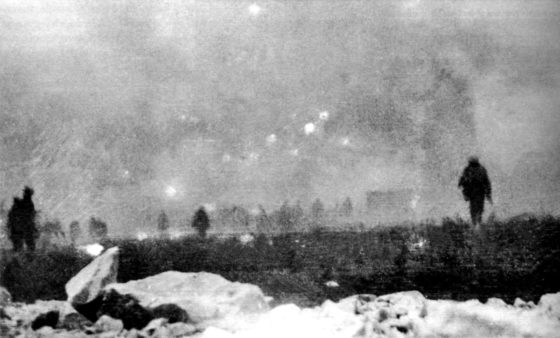
“With street-to-street fighting raging and casualties piling up casualties, Hitler still insisted that the 6th Army’s last stand would be ‘heroic drama.’”
By Liz Wyse, the Map Archive
SOMETIMES DESCRIBED AS the biggest defeat in the history of the German army, the Battle of Stalingrad was one of the largest confrontations in World War Two, involving nearly 2.2 million personnel, with between 1.7 and 2 million killed, wounded or captured.
The summer of 1942 saw a huge push of German Army Group South into southern Russia towards the city of Stalingrad as part of the larger movement towards the oilfields of the Caucasus. The German 6th Army advanced rapidly towards Stalingrad following a Soviet ‘fighting retreat,’ while the Wehrmacht’s Army Group A moved into the Caucasus leaving a gap between the two German forces.
Delays in the deployment of Army Group A’s 4th Panzer Army to the Caucasus held up the German advance giving the Soviets time to retreat. Fierce counterattacks by Red Army units north of Stalingrad helped stem the potential movement of German forces past the River Don.
Brutal fighting enveloped Stalingrad, however German air support from the Luftwaffe and superior equipment meant that the Russians were severely overpowered and outgunned. XXX

The German assault on Stalingrad soon deteriorated into brutal close quarters combat as stalemate set in. From their initial incursions into the southern sector of the city, German troops began the slow and arduous process of pushing further into the city, which had been reduced to rubble by artillery fire and constant aerial bombardment.
The remaining Soviet forces in Stalingrad were gradually pushed eastwards towards the Volga River where they could receive supplies from barges that crossed from the other side under heavy fire. Soldiers of the Red Army held out for months making a famous ‘last stand’ in the city’s tractor factory and the Red October steel mill. As winter set in the river froze making the resupply efforts of the Red Army even harder. The strength of the Luftwaffe began to diminish also however as losses accumulated from the hundreds of bombing runs it flew to destroy Soviet hiding places within the city.

With the beginning of winter, the Soviets organized an offensive to recapture Stalingrad codenamed Operation Uranus. It kicked off on Nov. 19, 1942 and aimed to encircle the city trapping the German 6th Army inside.
It began with heavy attacks targeting Romanian troops positioned on the flanks of German forces near the city itself. The under-equipped Romanians buckled under the assault and by Nov. 22, the Soviets had completely encircled more than 250,000 Axis troops, including the 6th Army.
In an effort to keep the besieged units resupplied, the Luftwaffe carried out a massive airlift that dropped food and ammunition, a German offensive, Operation Winter Storm, was devised to break through the Soviet lines to the southwest of the city. Launched on Dec. 12 by 4th Panzer Army, it petered out within five days; by Dec. 24, the forces tasked with the breakthrough were retreat.

General Friedrich Paulus, commander of the German 6th Army, aware that the quarter million Axis troops trapped in the city were doomed, requested permission to seek terms; Hitler refused. “Surrender is out of the question,” the Fuhrer declared. “The troops will defend themselves to the last!”
In January, the Germans inside the Stalingrad pocket began to withdraw from the outer suburbs, congregating in the city. The loss of two airfields, at Pitomnik and Gumrak, meant that the wounded could no longer be evacuated and supplies could not reach the trapped troops. The Germans were starving and their ammunition was running out. With street-to-street fighting raging and casualties piling up casualties, Hitler still insisted that the 6th Army’s last stand would be “heroic drama.”

On Jan. 26, German troops inside Stalingrad were split into two isolated pockets, unable to communicate with each other. Two days later, they were fragmented further into three parts. On Jan. 31, the southern and central pockets surrendered; Paulus claimed they had done so without his knowledge. The third pocket in the north of the city, commanded by General Karl Strecker, held out. On Feb., Strecker was informed that his officers had independently negotiated surrender terms with the Soviets and he subsequently surrendered.

Some 91,000 German prisoners were taken in Stalingrad, including 22 generals. As many as 10,000 German troops continued to resist in the shattered city, hiding underground. It would not be until March that the last remnants would be eradicated.
 Liz Wyse is the editorial director for The Map Archive, a U.K.-based online seller of military and historical maps from ancient to modern. To see their full collection, click HERE.
Liz Wyse is the editorial director for The Map Archive, a U.K.-based online seller of military and historical maps from ancient to modern. To see their full collection, click HERE.
Follow them on Twitter @TheMapArchive.










i got minecraft for free when i went to this website
I agree with gamer man, my free username is JeffBezonz1234